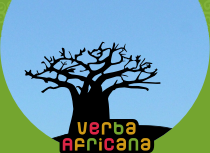Popular Culture
‘Popular’ as an adjective refers to intellectual and material productions appreciated by large numbers of people from all social strata. But in the social sciences, ‘popular’ has taken on another meaning, referring to sectors of society and/or social classes marked by customs, tastes, styles, forms of entertainment and artistic productions different from the ‘high’, ‘classical’ or ‘bourgeois’. A further tripartite differentiation points to ‘folk culture’ (rural, oral, traditional), ‘popular culture’ (urban, low-literate and/or oral, recently created by industrialization and urbanization), and ‘elite culture’ (bourgeois, written, classical/high). In this sense, popular culture can also converge with mass-culture, again ‘low’ with respect to elite culture, and produced and diffused through audio-visual mass media and forms of mass-entertainment.
This differentiation has been interpreted as pointing to a dichotomy between two separate worlds and cultures, the popular and the elite (see discussion in Barber 1997: 3). However, as argued early on by scholars such as Petr Bogatyrev and Roman Jakobson (1929/1982), social stratification does not imply a rigid cultural divide. A remarkable bottom-up and top-down circulation of artistic products takes place in and between classes and social sectors (from ‘low’ to ‘high’ as in the case of folk song themes re-used in classical music; from ‘high’ to ‘low’ as in the social diffusion of elite literary, artistic and consumption fashions).
The concept of ‘popular culture’ becomes even more problematic in the African context. According to Karin Barber (1997), the division between urban and rural, working classes and bourgeoisie applies poorly to Africa, as the distinction between high/elite and low/popular, as well as between folk/rural/traditional and popular/urban/modern is ambiguous. The only constant characteristic of the categories included under ‘popular’ is their opposition or marginal location vis-a-vis military, political and social power. Barber concludes (1997: 4) that “what endures is a pervasive sense of ‘us’ and ‘them’”, and suggests African popular culture is “a field of exploration rather than definition”.
The oppositional/marginal position of African ‘popular culture’ can be linked to previous writings, in particular Gramsci’s early Marxist analysis of popular culture and subsequent works by Stuart Hall, Ranajit Guha and Gayati Chakrovarty Spivak, among others. ‘Popular’ comes to describe the working classes, rural and urban, mainly oral or low-literate, socially opposed but culturally subordinated to the dominant classes. Their opposition finds temporary artistic expression, limited to the length/duration of the song, the theatre piece, the video, etc. The dominant groups are hegemonic when they succeed in organizing consent, spreading their views, tastes and customs; when they enforce interclass and intercultural prestigious models that are ideologically complicit with the ruling group; and when they are able to digest the cultural production of subordinate groups by innovating cultural forms while ‘domesticating’ their dangerous (oppositional) input.
When the concept of ‘popular’ is freed from its context of class opposition to become a ‘weak’ form of differentiation (between “us” and “them” in Barber’s definition of African popular culture), it becomes more flexible, allowing inclusion of variegated contexts and productions — but at the cost of undermining the conceptual and political force of ‘popular’.

